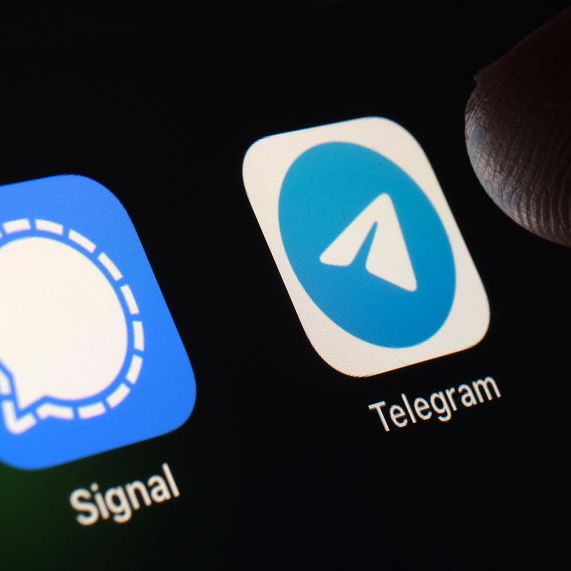With mobile phones and computers always connected, digital communication is now the norm. This has made security and privacy more important than ever, as cybersecurity threats continue to grow.
For those who prioritize private and secure messaging, Signal and Telegram are two of the most popular choices. The debate between them mainly revolves around differences in security, data handling, features, and usability. We’ll analyze each app’s strengths and weaknesses, focusing on security and transparency, so you can make an informed choice.
Signal and Telegram are popular privacy-focused alternatives to WhatsApp and Facebook Messenger. Telegram offers more features and cloud storage, while Signal is simpler, more transparent, and highly secure. But which app is better at keeping personal data safe?
Safety and Security
Signal and Telegram are among the most secure messaging apps. They are praised for their strong privacy and security features, making them top choices for safe communication. The Signal vs Telegram debate comes down to key differences in ease of use, data handling, and security. In this article, we compare both apps’ security, pros, and cons to help you make an informed decision.
What is Signal?
The Signal Foundation, a non-profit organization, created the Signal messaging and communication app. The app prioritizes privacy, encrypting all messages, calls, and media by default. Known for its humble design and strong security, it uses the Signal Protocol—an open encryption system also used by WhatsApp.
Main Features of Signal:
- End-to-End Encryption: Signal encrypts all communications by default so only the receiver and sender can see the content.
- Minimal Data Retention: Signal doesn’t retain metadata but retains only the phone number you use to sign up for an account.
- Self-Destructing Messages: Users themselves can set timers for messages to disappear automatically, adding security.
- Open-Source Code: Signal’s codebase is fully open-source. Security professionals worldwide regularly audit it in order to detect potential vulnerabilities.
With its dedication to transparency and user privacy, Signal has become a go-to app for activists, journalists, and anyone prioritizing privacy and security in their communication.
What is Telegram?
Released by Pavel Durov in 2013, Telegram is a cloud messaging platform with configurable privacy features and great user experience. With over 700 million active users, Telegram stands out for its rich features, including file sharing and group chats for up to 200,000 members.
Key Features of Telegram:
- Multiple Chat Types: Telegram features standard cloud-based chats and end-to-end encrypted “Secret Chats.”
- MTProto Protocol: Telegram uses its own encryption protocol for cloud-storing messages, though not end-to-end by default.
- Cross-Platform Sync: Telegram’s cloud-syncing storage facilitates data across devices.
- Custom Features: Telegram provides features such as bots, channels, and rich customization options for user engagement.
Though Telegram users like it for its versatility, the security-conscious would be horrified at the cloud-based default system it has to provide.
Security Features Comparison: Telegram vs Signal
Encryption standards, privacy terms, and Signal’s message self-destruction enable us to compare its security with that of Telegram. We present you a detailed comparison below.
Encryption Standards
One-on-one messages, group chats, and voice/video chats – Signal employs end-to-end encryption (E2EE) by default. That means no third party – including Signal – gets to see the content of your communication. Signal’s encryption is powered by the Signal Protocol, known as the gold standard in cryptographic security.
Meanwhile Telegram’s cloud-based chats are encrypted by default with MTProto, protecting data in transit and at rest. E2EE is only offered through its optional “Secret Chats” feature. MTProto has been criticized for not being as open or battle-tested as Signal’s protocol, though it does offer strong encryption.
Verdict: Signal offers better encryption since E2EE is always enabled; Telegram requires opting into “Secret Chats” for the same protection.
Privacy and Data Collection
Signal treats privacy in a revolutionary manner. The app stores just your phone number for account registration and minimal information. Signal servers store no logs, metadata, or chat history, and the users have complete control over data.
Default Telegram chats store messages, media, and data in the cloud, and syncing to devices is easy. This is convenient for the users at the cost of Telegram gaining access to your data, which is encrypted.
Verdict: Signal stores data only on your device, making it the top choice for privacy-conscious users. Telegram’s cloud storage may raise concerns for those wary of third-party data access.
Self-Destructing Messages
Signal provides the feature of sending self-destructing messages in all chats. The feature is highly customizable, allowing users to set messages to expire anywhere from seconds to weeks.
Telegram permits self-destructive communications in its “Secret Chats.” Users can set timers from seconds to days, ensuring sensitive messages are automatically deleted after a set time. Normal cloud chats do not permit this functionality.
Verdict: Both applications are excellent at sending self-destructive messages, but Signal is a narrow victor since it can enable every chat.
Open Source and Transparency
Signal has an open-source codebase, allowing the public to inspect and audit its software. Such openness generates trust in users and enables security researchers to detect vulnerabilities early.
- Telegram is half open-source. Nonetheless, its server-side code and MTProto protocol are proprietary, limiting outside scrutiny despite its open client-side code.
- Signal’s commitment to open-source concepts makes it more open and believable than Telegram’s half-open concept.
Table of Comparisons: Signal vs Telegram Security Measures and Dynamics
| Feature | Signal | Telegram |
| Default Encryption | End-to-End Encryption (E2EE) | MTProto (Cloud Chats) |
| Optional E2EE | Enabled by Default | “Secret Chats” Only |
| Data Storage | On User Devices | In the Cloud |
| Self-Destructing Messages | Available in All Chats | “Secret Chats” Only |
| Open Source | Fully Open Source | Partially Open Source |
Signal vs Telegram: Which Messaging App Is More Secure?
Recent data shows that Signal is the most secure messaging app, thanks to its strong encryption, minimal data storage, and commitment to privacy. Its open-source design and default end-to-end encryption make it the gold standard for secure messaging.
Telegram, on the other hand, is more of a general-purpose app for users who value features like cloud sync, bots, and large group chats. However, due to its reliance on optional E2EE and cloud storage, it is not as appealing to privacy-focused consumers.
Who should use Signal?
- People who are looking for maximum security and privacy.
- Professionals working with sensitive materials, activists, and journalists.
Who should use Telegram?
- People who are looking for feature-rich communication devices.
- Recreational users who prioritize absolute security second to convenience.
Tips for Securely Using Signal and Telegram
Your safety is your responsibility when using these apps despite strong security. These handy tips will lock in your correspondence securely:
Keep Apps Updated
Use Signal or Telegram’s latest version for security patches and features. Developers regularly release updates to fix issues, improve speed, and improve security.
Enable two-factor authentication (2FA)
Signal and Telegram services provide two-factor authentication adding a layer of protection. To set up 2FA on both apps:
- Lock in a PIN by going to Settings > Privacy > Registration Lock.
- Create a password by going to Settings > Privacy and Security > Two-Step Verification.
Manage Permissions and Limit Data Sharing
Review and modify app permissions to limit unnecessary access to your device’s camera, microphone, and contacts. Provide the permissions that are only needed for app functions.
Avoid Phishing Attacks and Suspicious Links
Before clicking on any link, use a link checker to verify its safety. Be cautious of unsolicited messages, emails, and pop-ups, as they may contain phishing attempts or harmful links.
Ease of Use: Signal vs Telegram
Signal and Telegram are leading messaging apps known for their privacy, encryption, and ease of use. However, it is not so easy to decide between the two.
Security reaches the core, but the best messaging software is mostly selected based on convenience and ease of use. Let us compare Signal and Telegram in user experience, design, and other functionalities.
User Interface and Design
Signal’s design is minimalist and simple for convenience. The app is convenient for consumers who like simplicity as it prioritizes utility over design. Its simplicity of design is perfect for instant access to security features and communications.
Telegram features a more colorful and resizable UI. Consumers can have access to a large number of stickers and bots, apply themes, and alter chat backgrounds. While the design is convenient, the other functionalities might daunt those who prefer simplicity.
Signal loves simplicity with a clean design, while Telegram is a master of customization, offering a wide range of features and personalization options.
Features and Functionality
Signal boasts an array of dynamics, including:
- A strong focus on secure communications over additional features.
- Support for group chats with up to 1,000 participants, but with no advanced management features.
- End-to-end encrypted voice and video calls for both one-on-one and group conversations.
Telegram is filled with features, including:
- Gigantic group chats that can hold nearly a whopping 200,000 users.
- Broadcast channels for reaching unlimited audiences.
- Bots for automation and personalized functionality.
- File sharing with a limit of 2GB file size.
- Supported voice and video calls, though they are less secure than Signal’s.
Winner: Telegram wins with rich functionality and scalability.
Cross-Device Synchronization
Even though all data is device-bound and not stored in the cloud, Signal supports linking accounts across multiple devices. This ensures maximum privacy but prevents seamless syncing across multiple devices.
The cloud infrastructure in Telegram supports seamless synchronizing between devices. Users can initiate a conversation on a device and resume where they stopped on another device. However, such convenience comes with a cost in the form of increased vulnerability.
Winner: Telegram wins for ease of use; Signal remains the better option for consumers who prioritize security.
Scalability and Collaboration
Signal supports group chats but is limited in size and lacks sophisticated collaboration features like polls, file-sharing management, and admin controls.
Telegram’s group chat capabilities are unparalleled. It supports behemoth groups and includes a rich array of collaboration features. As a result, it’s a top choice for communities, organizations, and teams that need large-scale communication.
Telegram is a winner in terms of scalability and collaborative tools.
Global Adoption and User-Base
Global adoption and user base bring to fore their contrasting popularity in Signal vs Telegram. Telegram has over 700 million monthly active users in 155 nations, fueled by its feature richness, support for large group chats, and cloud-based infrastructure. Its adoption across the world makes it a darling of communities and businesses.
On the contrary, Signal enjoys a niche and increasing user base, often preferred by privacy fans, activists, and journalists. With the patronage of privacy enthusiasts like Edward Snowden, Signal’s popularity lies in its unflinching commitment to security and openness, which finds traction with consumers prioritizing strong protection over wide functionality.
Signal User-Base
Signal is also active among professionals and privacy advocates. With the endorsement of the likes of Edward Snowden and Elon Musk, the app has experienced explosive downloads, particularly when privacy scandals involve competitors like WhatsApp. Signal’s market share, however, still trails behind that of Telegram.
Telegram User-Base
As of 2023, Telegram has a much greater user base: over 700 million active users. Its popularity is felt in Eastern Europe, South Asia, the Middle East, and other regions, where its capabilities are attractive to business communities and general consumers.
Winner: Telegram wins in user base and adoption globally.
Real-World Applications: When to Use Signal or Telegram
Use Signal to enjoy maximum privacy and secure one-on-one messages. Use Telegram if you need flexible functionality, large group messaging, and access to a wider audience.
Use Signal If You:
- Need secure communication for sensitive information.
- Prefer minimal data snooping and a privacy-first philosophy.
- Don’t require advanced features or large-scale messaging capabilities.
Use Telegram If You:
- Manage or are part of large communities or groups.
- Need features such as cloud-based file sharing, bots, or public channels. To make the most of these, you can use the Telegram Search Engine to easily find relevant channels, groups, and bots.
- Prefer customization and cross-device synchronization over fanatical security.
The Verdict: Which Messaging App is Better for You?
The decision between Signal and Telegram usually boils down to your usage and needs.
Signal is the safe bet if overall security and privacy are your number one priority. It features end-to-end encryption, minimal data snooping, and open-source transparency, making it the gold standard for private chats and communications.
Telegram provides superior, unbeatable scalability if you need a feature-rich messaging system that accommodates gigantic chat groups, large file transfers, and today’s customization. But you might need to use “Secret Chats” for sensitive conversations.
For privacy-conscious users, Signal is the best choice, while Telegram balances ease of use with decent security.
The Pro Tip
Use Signal for private, secure messaging and Telegram for group chats and media sharing. Both apps have their strengths and are useful tools for contemporary communication.
Do you use Signal, or Telegram, or both? Share with us!



































